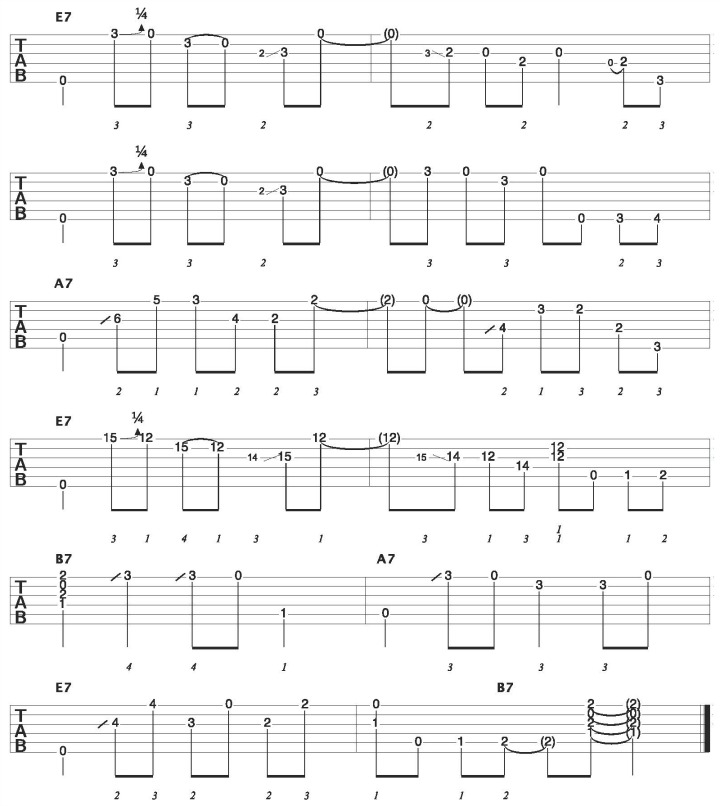How To Play Blues On Acoustic Guitar - Acoustic Guitar Blues Licks
Today I would like to show you some blues licks you can play on your acoustic guitar. However I also want to take it one step further, and show you how to connect these licks together to create a really cool acoustic blues solo. It will sound like you have a bass guitar playing along with you. This kind of stuff really impresses!
Learning to play blues on the acoustic guitar can sound great, especially in the key of E. The reason why is that it allows you to use a lot of open strings in your blues licks. The open strings will have your licks resonate more than if you were in a key that had mostly fretted notes.
For this lesson, it is assumed that you are already somewhat familiar with the 12 bar blues progression. Here it is, in the key of E, if you need a refresher:

Knowing and having this progression in your ear is a very important part of learning how to play blues on your acoustic guitar.
Lets get started by running through the following blues licks. Each lick will relate to a certain part of our 12 bar blues.
Here is our first blues lick we are going to use:

The lick above will be used for the E7 chord in our blues. It will be slightly varied each time it is used.
Here is the second blues lick:

This lick will be used for the A7 chord the first time it comes up in our blues.
Here is the third blues lick:

This lick will be used for the B7 and A7 chords in bars 9 and 10 of our blues.
Here is the fourth blues lick:

This is a classic blues turnaround lick. It will be used in bars 11 and 12 which is commonly referred to as the turnaround. The purpose of the turnaround is to turn the tune back around to the start again.
Connecting Your Blues Licks Together
Each blues lick above sounds great on its own, and can certainly be used in this way. However, we can also connect these licks together to have a more complete sounding blues on our guitar.
You may have noticed that each acoustic blues lick above started with an open string. The great thing about a blues in E is that you can use the low E and A open strings of your guitar to sound the root notes of the E7 and A7 chords.
Learning to play your blues licks in this way sounds awesome! It gives the impression that there is a bass playing along with you, and has a much more complete sound about it. For best effect, you want to make sure that the open string rings out or drones as you play the lick.
Here is the resulting blues you get when connecting your acoustic licks together, while taking advantage of the low E and A open strings where possible:

In the example above, I have used the same basic blues lick idea for the E7 chord in bars 1 - 4 and again in bars 7 - 8. There are some slight variations each time, and in bars 7 - 8 the lick is played in the upper octave from the 12th fret.
Every other lick remains the same or very similar to when it was first introduced. In addition to the low E and A open strings ringing through, I have also added some notes to create a better sounding bass line to go with our blues licks.
The above is just one example of how to play a blues on your acoustic guitar. You can modify and simplify it however you like. It’s the use of the low open strings, to give a more complete sound, that I want you take away from this lesson.
Be sure to take your time with these ideas. Get them down as they were first introduced in this lesson, and then work on connecting them together. You should also have a go at creating your own blues licks and solo’s using this approach.
Discover the joy of fingerpicking with this fun and simple fingerpicking guitar course for beginners